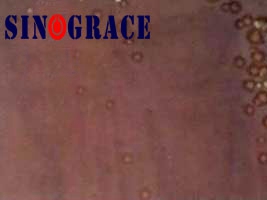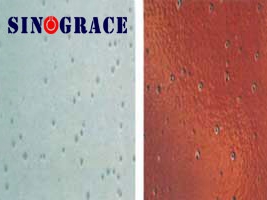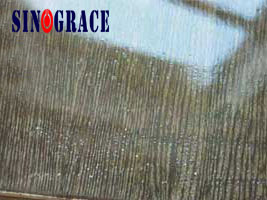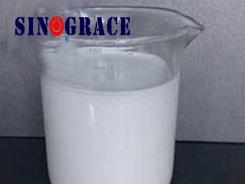Formation of shrinkage cavity problems in waterborne coatings
Formation of shrinkage cavity problems in waterborne coatings The surface defects of the coating film are mainly depressions, pinholes, and the edges or thick edges of the corners. There are two kinds of cases on the surface of the coating film, one is a circular depression, and a hexagonal polygonal depression. The depression on the surface of the coating film is caused by the surface tension gradient. The surface tension is uneven due to the change of the composition of the coating and the temperature change. The fluid flows from the low surface tension to the high surface tension, and as a result, a depression is formed on the surface of the fluid, which is also called The Maragoni effect eventually leads to edge bulges, shrinkage cavities that are centered in a circle, or Benaldo vortices with edge ridges and central depressions into hexagonal grooves. The material with low surface tension in the center of the shrinkage cavity exists, and the surface tension of the surrounding paint is poor. This difference is the power of the shrinkage hole formation, which causes the surrounding liquid fluid to flow away from it (the shrinkage source) and flow away. And flow into a depression - shrinkage cavity. The coating forms shrinkage holes during the construction drying process, which has problems with the coating itself and the problem of cleaning the substrate. The surface tension is caused by the presence of low surface tension droplets in the coating itself or due to contamination of the coated surface due to contamination. Uneven, the coating flows from a low surface tension to a high surface tension under the effect of surface tension, resulting in a centrally depressed hole-shrinkage. We classify the unevenness of surface tension as the internal cause of shrinkage formation. In fact, some properties of the coating itself, such as paint viscosity, thixotropy, paint drying speed and film thickness, can aggravate or reduce the flow ability of the coating fluid, which will aggravate or weaken the degree of shrinkage. We classify these factors as shrinking. The external cause of the hole. The internal cause is an inevitable condition for shrinkage, and the external cause can appropriately control or aggravate the degree of shrinkage. After coating application, during the dry film forming process, the surface solvent volatilizes, the concentration of the surface polymer increases, and the viscosity of the coating increases, which causes the surface tension and surface density to exceed the bulk and form a depression. In general, thicker coatings (> 4 mm) of liquid coatings, mainly density gradients drive the flow, and thinner liquid coatings are surface tension gradients that control the flow to form individual shrinkage cavities. Sinograce Chemical produces water based coating,Water-based glue, polyurethane coating,Acrylic solution. visit us sinograce chemical: https://www.sinogracechem.com Get a Quote Now :sales@sinogracechem...
read more

 English
English français
français русский
русский español
español العربية
العربية








